While many people associate wool only with heavy coats or scratchy sweaters, the truth is that wool comes in a huge variety of weaves and knits, each with its own unique drape, weight, and texture. It’s naturally breathable, insulating, and resilient, making it an excellent fiber to keep in your sewing toolkit.
Here’s a closer look at 12 common types of wool fabrics and how you might use them in garment sewing.
1. Wool Crepe

Wool crepe is a lightweight wool woven with highly twisted yarns, giving it a crinkled, slightly pebbled surface. Soft but slightly spongy, this fabric has beautiful drape and body.
Because of its drape and bounce, crepe is ideal for dresses, blouses, and skirts that flow but still hold some shape.
Recommended Patterns:
Taylor dress: With its wrap silhouette, princess seams, and full gathered sleeves, Taylor emphasizes crepe’s balance of flow and structure.
Danielle blouse: The ruffled collar, rouleau loops, and French darts bring out the romance of wool crepe’s texture.
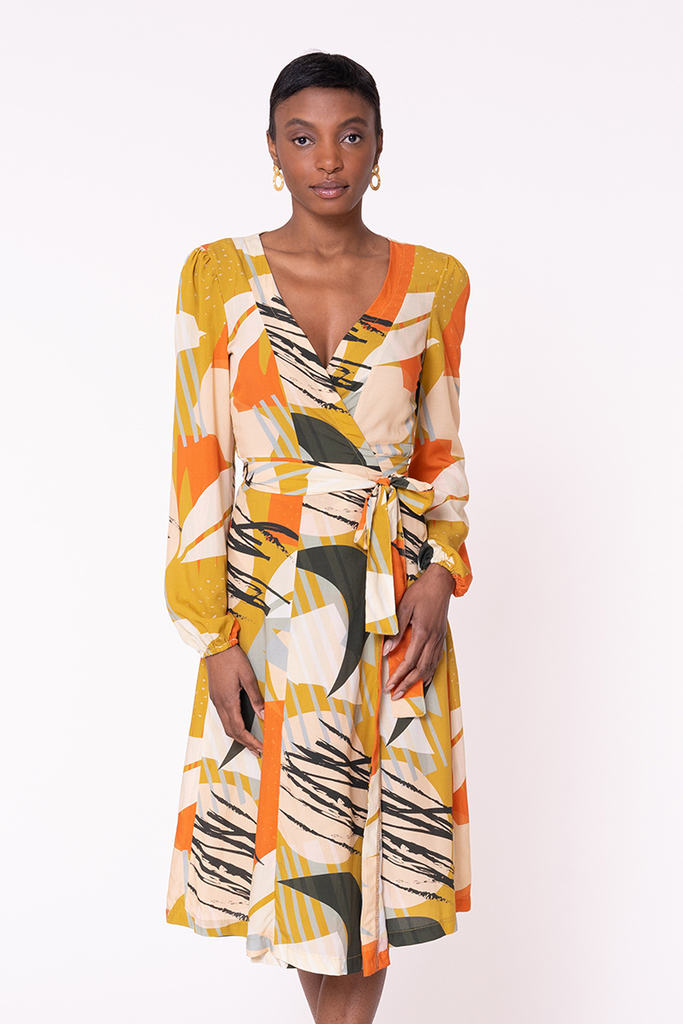

2. Wool Gabardine
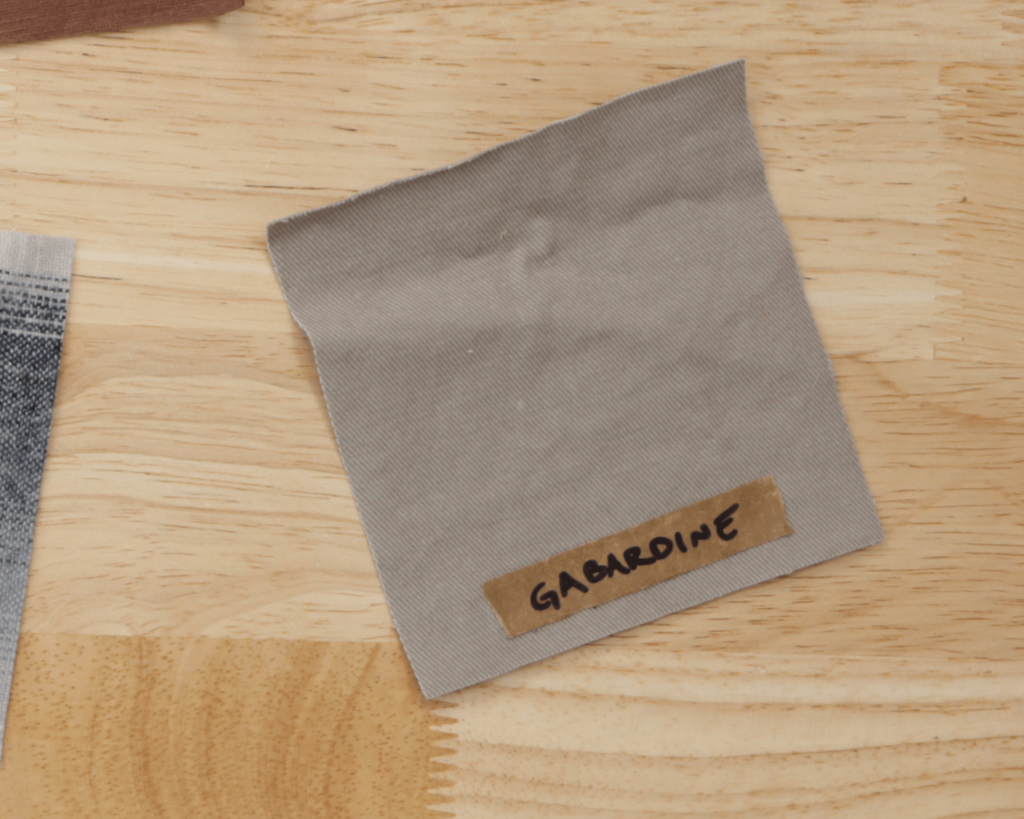
Wool gabardine is a tightly woven twill with a smooth, crisp surface and slight diagonal texture. This fabric is firm, structured, and durable, with a little stretch on the bias.
Gabardine holds a crease beautifully, making it a top choice for tailored looks like trousers, blazers, and suits. It can show needle marks, though, so it is best to test stitching on scrap fabric first.
Recommended Patterns:
Indigo coat: Gabardine’s structure makes the inverted box pleat of this classic car coat stand out.
Ulla dress: This double-breasted shift dress takes on a sharp, modern look in crisp gabardine.
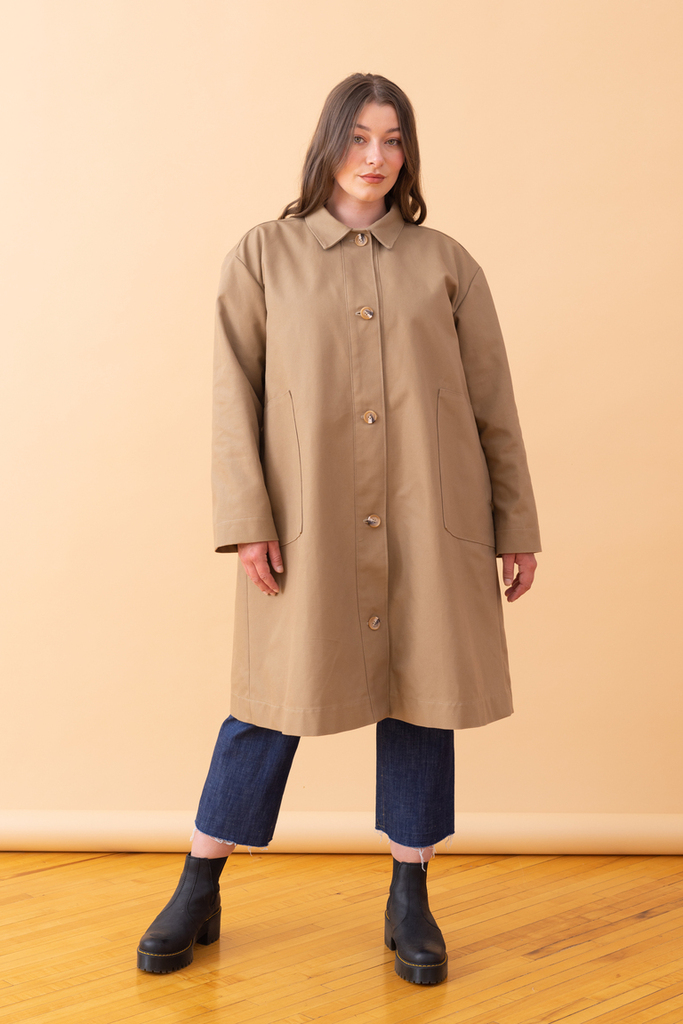
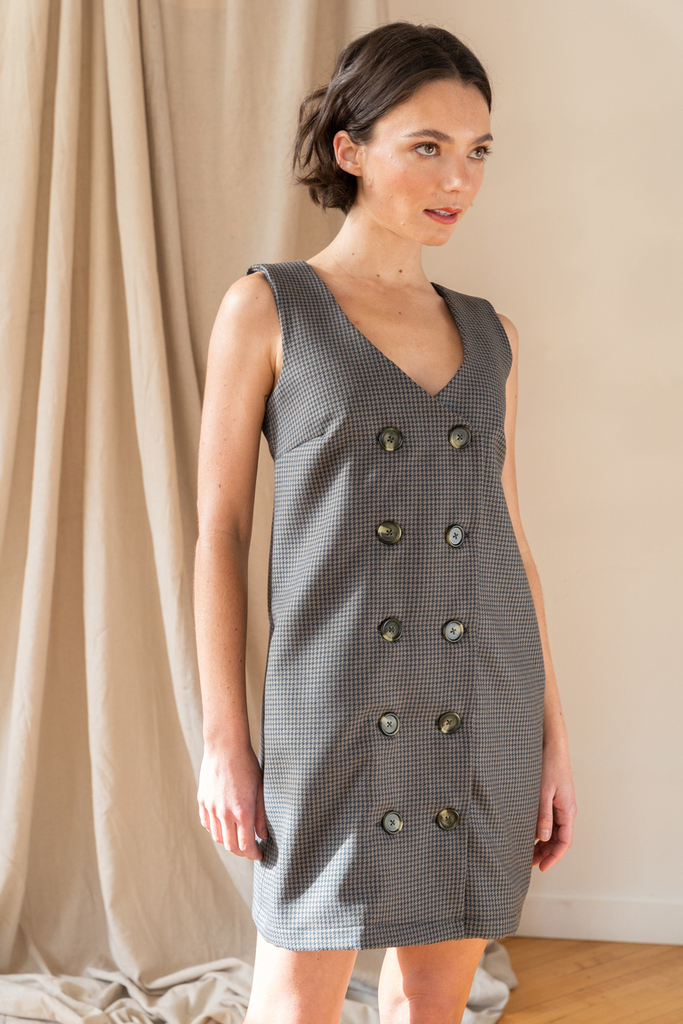
3. Wool Flannel
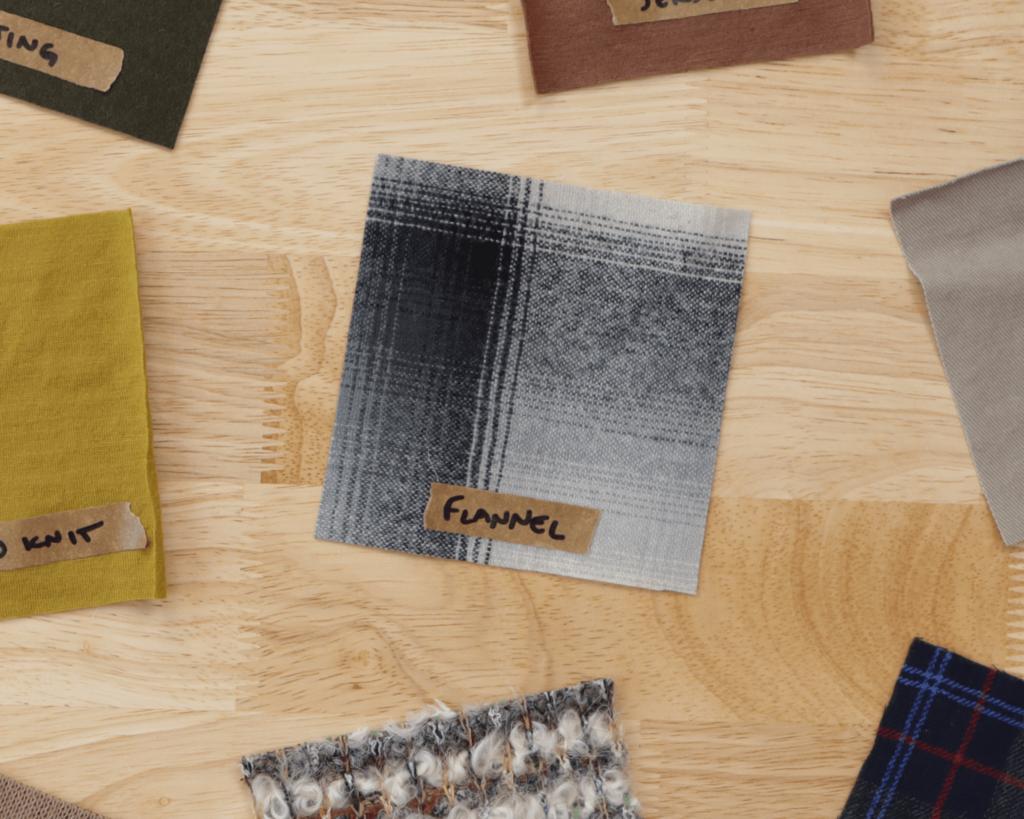
Wool flannel is a soft woven fabric that has been brushed to raise a nap texture on the surface. Similar to cotton flannel, it’s cozy, warm, and slightly fuzzy, with a matte look.
Flannel works wonderfully for shirts, casual skirts, lightweight jackets, or even pajamas. Because of its nap, make sure to cut all pieces in the same direction.
Recommended Patterns:
Bud shacket: Flannel enhances the casual, workwear feel of this layering piece, making it a garment you’ll reach for again and again.
Elm robe: This timeless, gender-neutral robe drafted for easy comfort takes on extra warmth and softness when sewn in wool flannel.
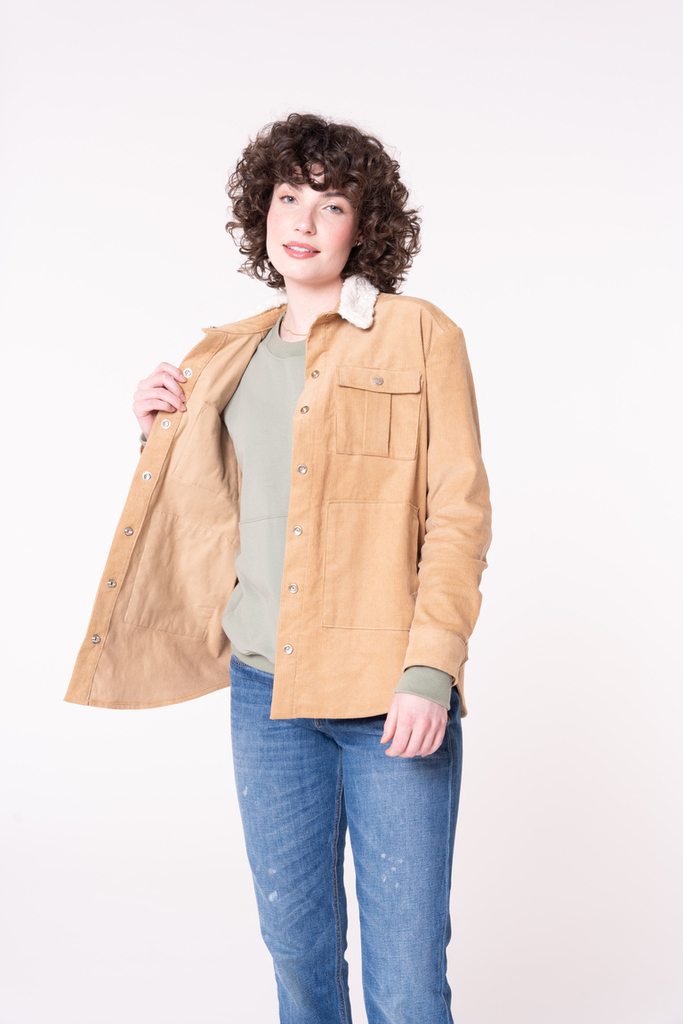

4. Wool Suiting
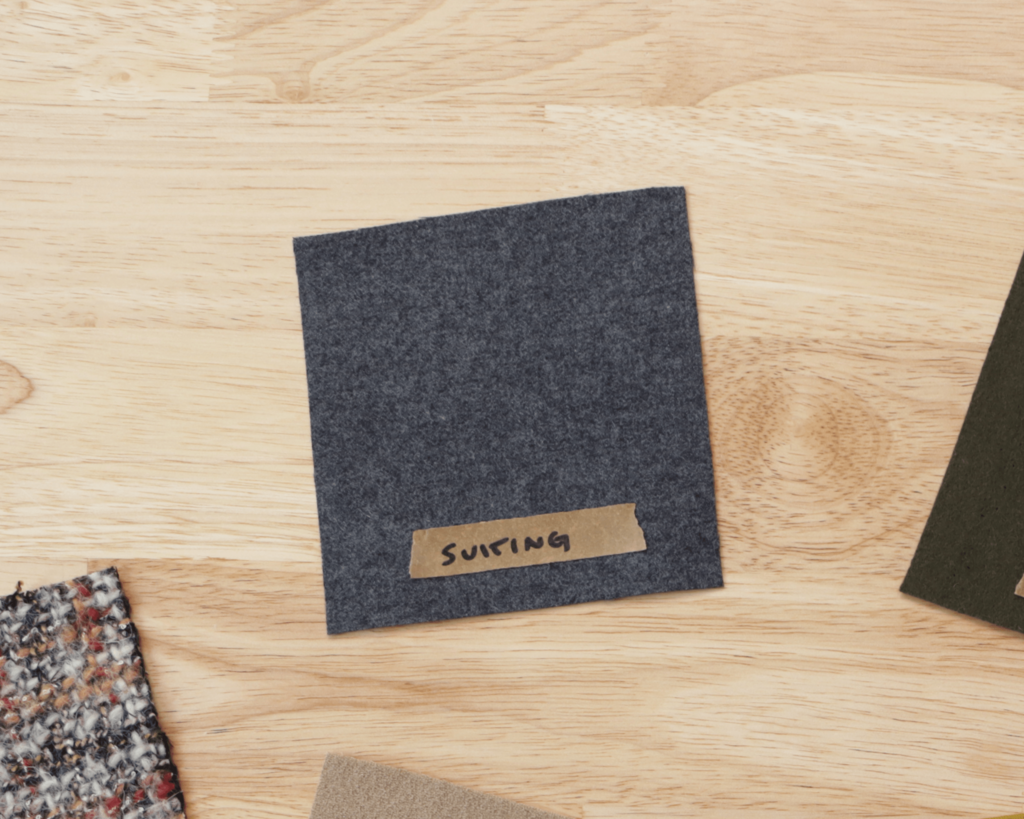
Wool suiting is a smooth, stable medium-weight wool woven with crisp drape. Easier to handle compared to lighter wools, this is an excellent starting fabric if you want to try sewing structured garments like blazers, trousers, or pencil skirts.
Recommended Patterns:
Christina skirt: This classic pencil skirt with modern details highlights suiting as a polished choice for a workwear staple.
Erin trousers: With a tapered fit, slash pockets, and a clean waistband finish, Erin is chic and versatile in wool suiting.
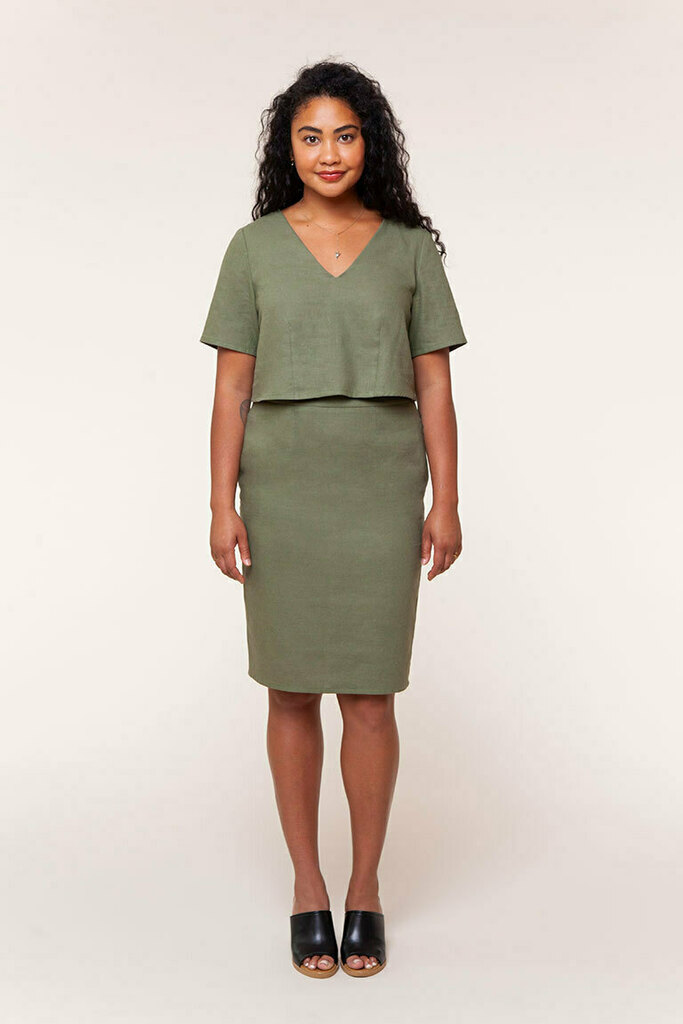
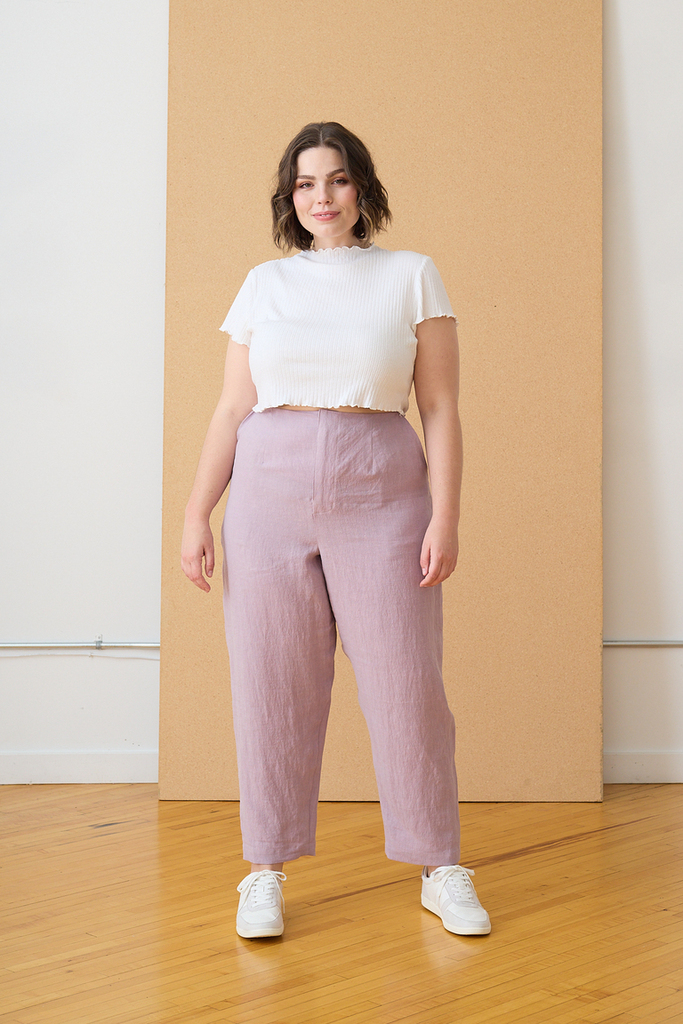
5. Wool Jersey
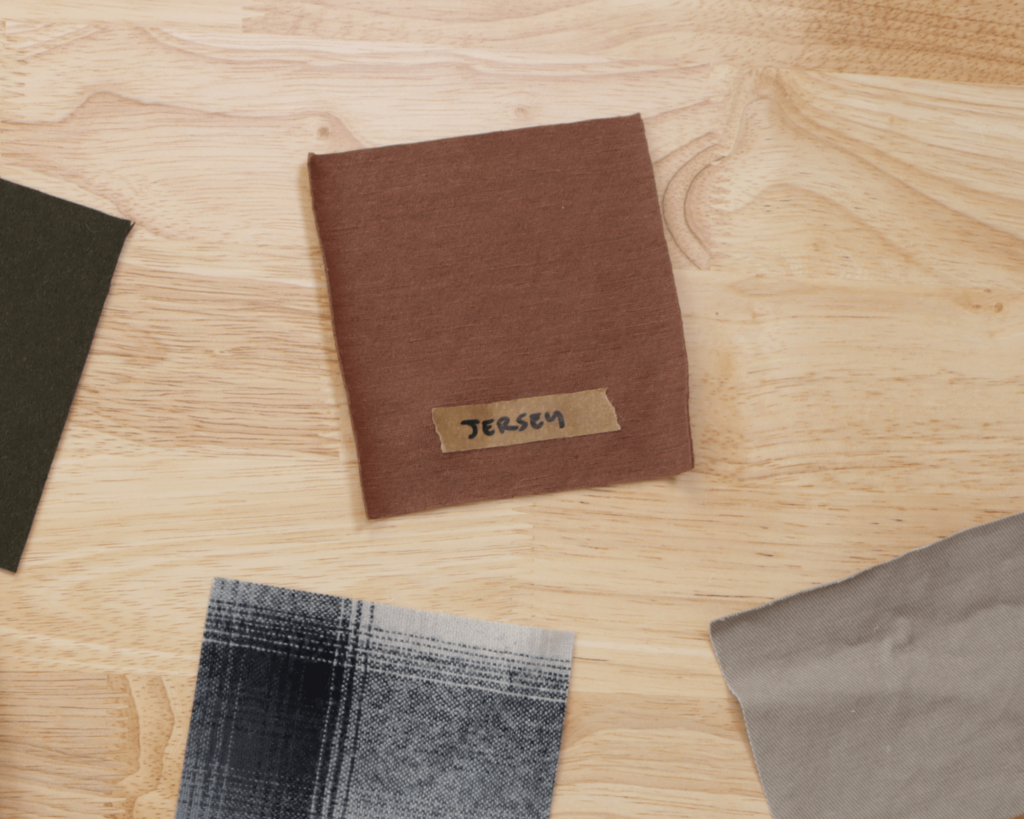
Wool jersey is a knit fabric made with wool fibers, often with a smooth face and slight stretch. Like other knits, wool jersey doesn’t fray, but edges can curl, so handle with care.
Perfect for tops, dresses, and lightweight cardigans, garments made from wool jersey are warm, comfy, and polished. Be sure to use a ballpoint or stretch needle and a stretch stitch or serger for best results with knits.
Recommended Patterns:
Ryan T-shirt: This gender-neutral tee feels elevated and extra cozy in wool jersey.
Tai Tunic: Slim lines and shoulder gussets give this tunic (or dress) a sophisticated look in wool jersey.
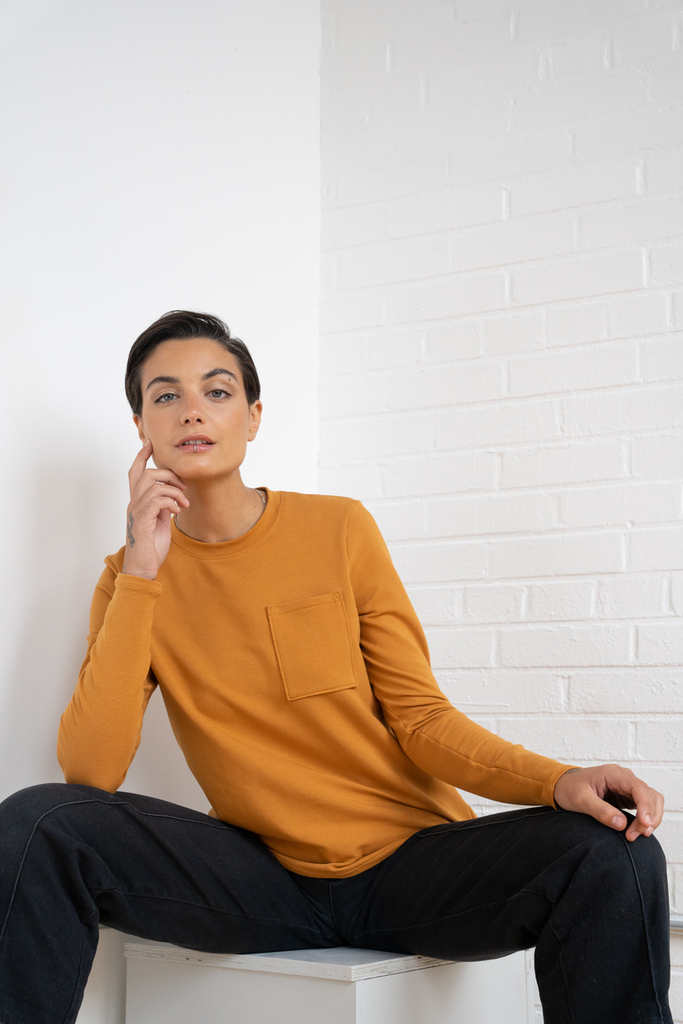
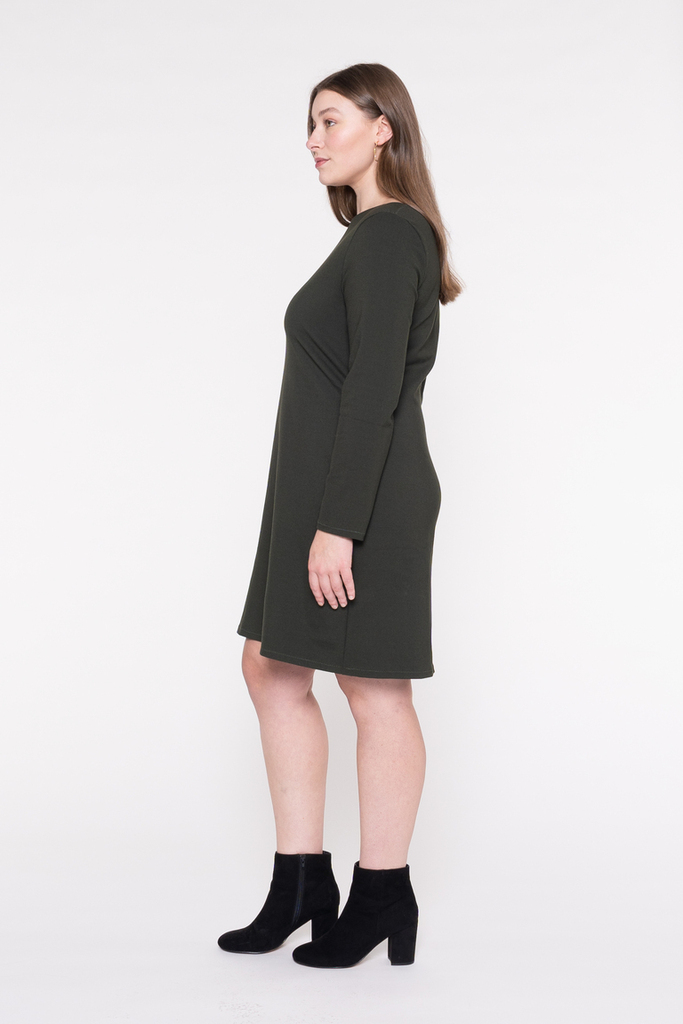
6. Wool Challis

Wool Challis is a lightweight, plain-weave wool similar in hand to cotton lawn or rayon challis. Smooth, matte, and drapey, this fabric is great for blouses, soft dresses, or scarves.
Like its cotton and rayon counterparts, wool challis can be slippery. Staystitch curves and use fine needles to avoid stretching and snagging.
Recommended Patterns:
Mina top: This retro-inspired blouse is a natural fit for the fluid drape of challis.
The Bertie dress: This shirtdress has thoughtful detailing that comes alive when paired with challis’s softness.
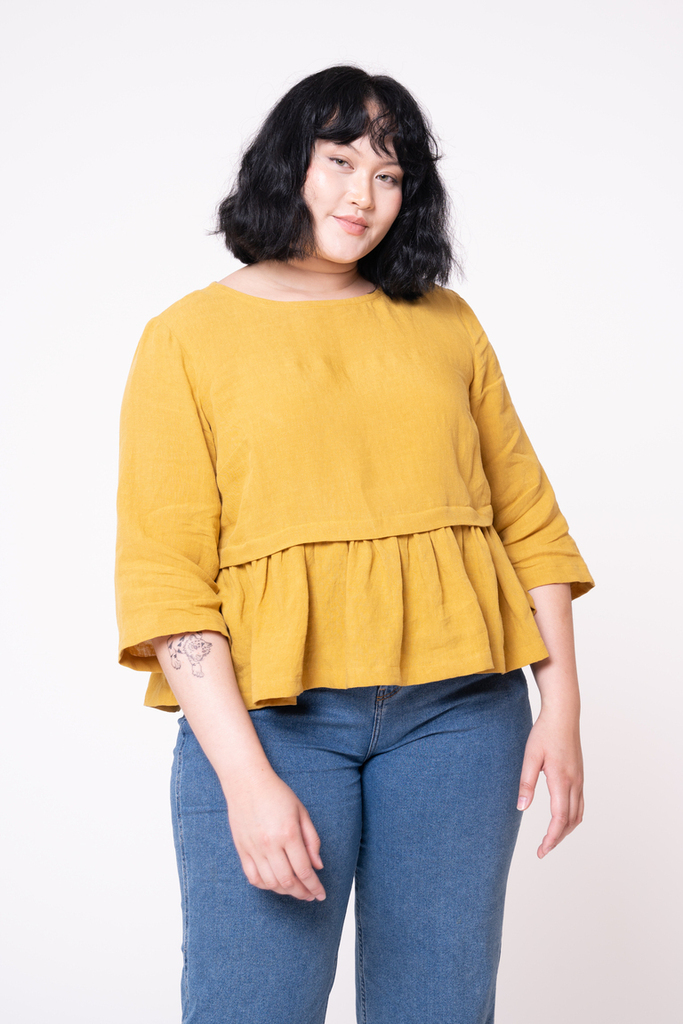

7. Tweed
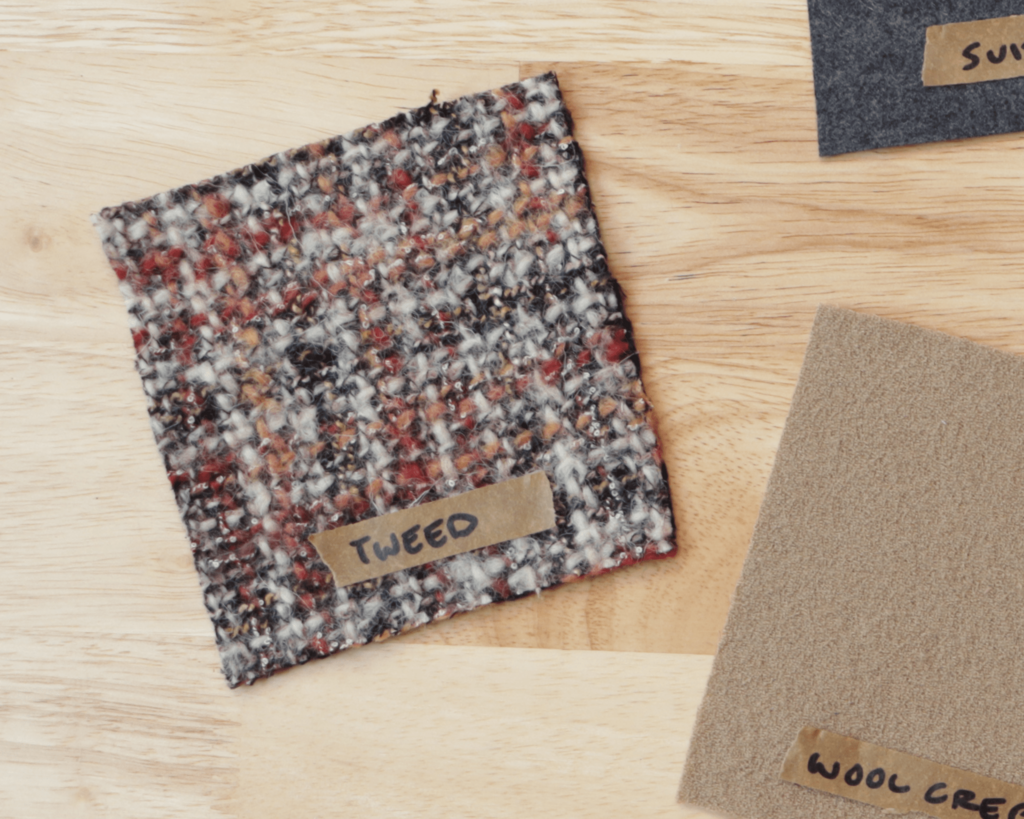
Tweed is a rough (sometimes scratchy), textured wool fabric. Classic and timeless with loads of personality, this fabric is ideal for jackets, skirts, or coats.
The loose weave can fray a lot, so edges should be finished immediately. Tweed garments can also be lined to avoid itchiness.
Recommended Patterns:
Keaton blazer: Double-breasted and relaxed, Keaton lets tweed’s texture take center stage for a chic layering piece.
The Dani pinafore: The stylish A-line silhouette of Dani looks especially striking in tweed, and the full lining prevents scratchiness.
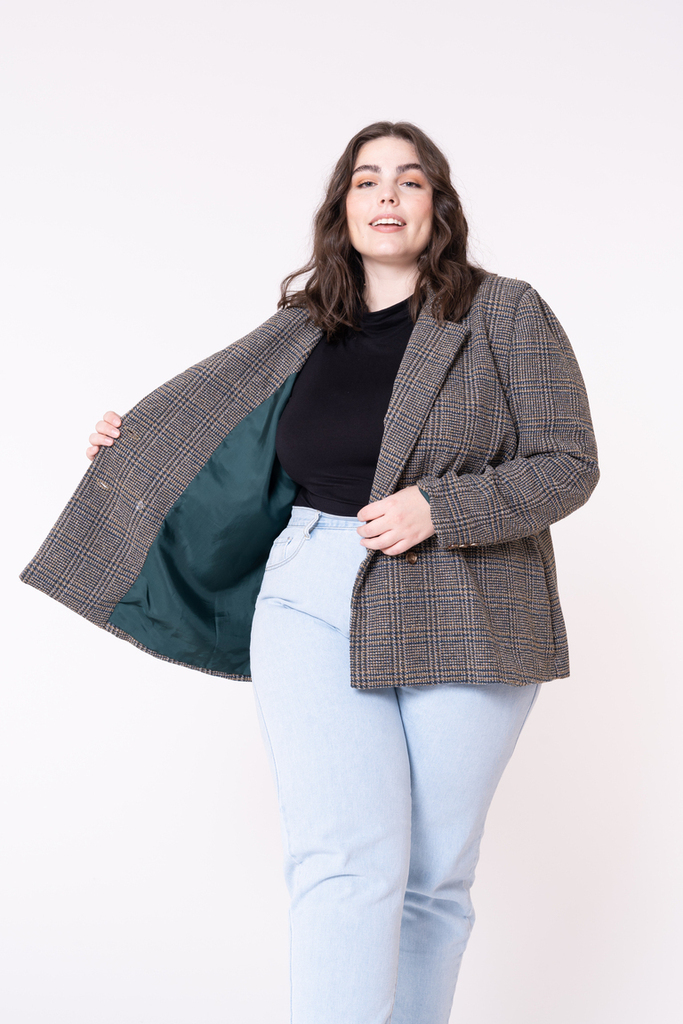
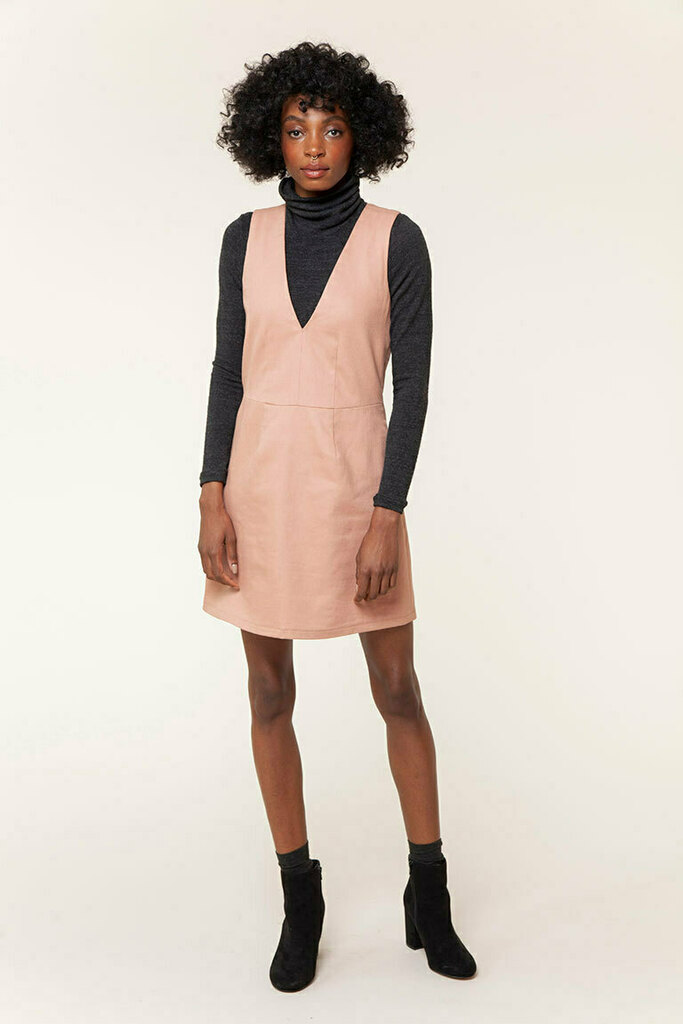
8. Wool Coating

Wool coating is a category of heavy wool fabrics designed specifically for outerwear. Thick, warm, and structured, this fabric can have varying textures depending on the weave.
Coating is perfect for winter coats, capes, and outerwear that you want to last for years. Because of its thickness, use a heavy-duty needle and longer stitch length. Grade seams and consider topstitching to reduce bulk.
Recommended Patterns:
Bay coat: Tailoring details and a timeless silhouette make this coat a natural pairing with wool coating.
Denise coat: Simple construction and a collarless design let coating fabrics shine while offering a beginner-friendly first coat project.
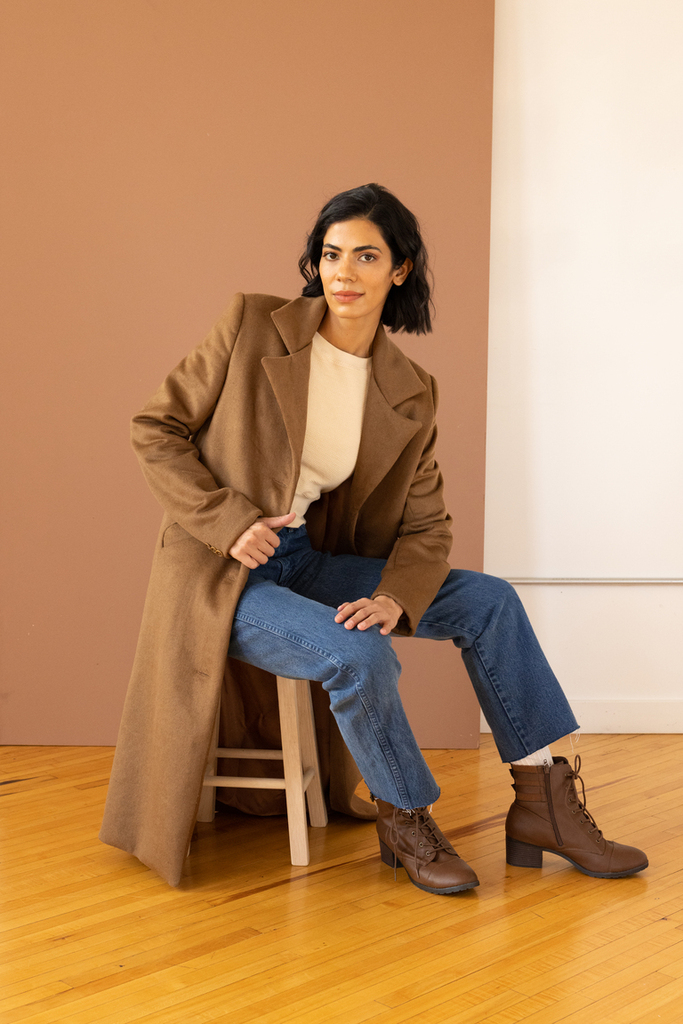
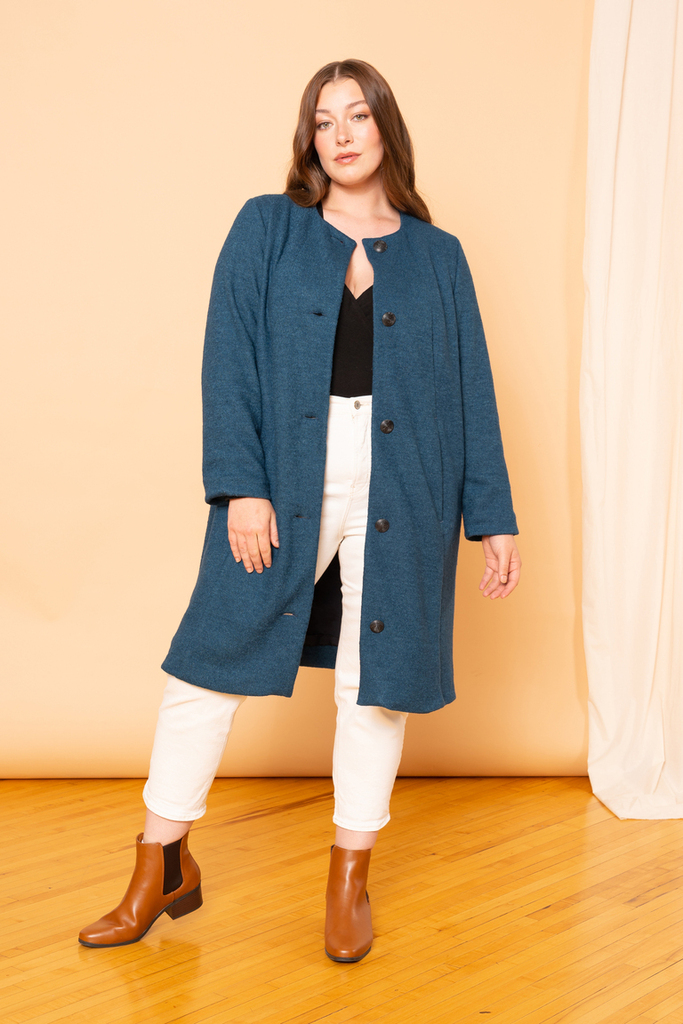
9. Merino Wool Knit
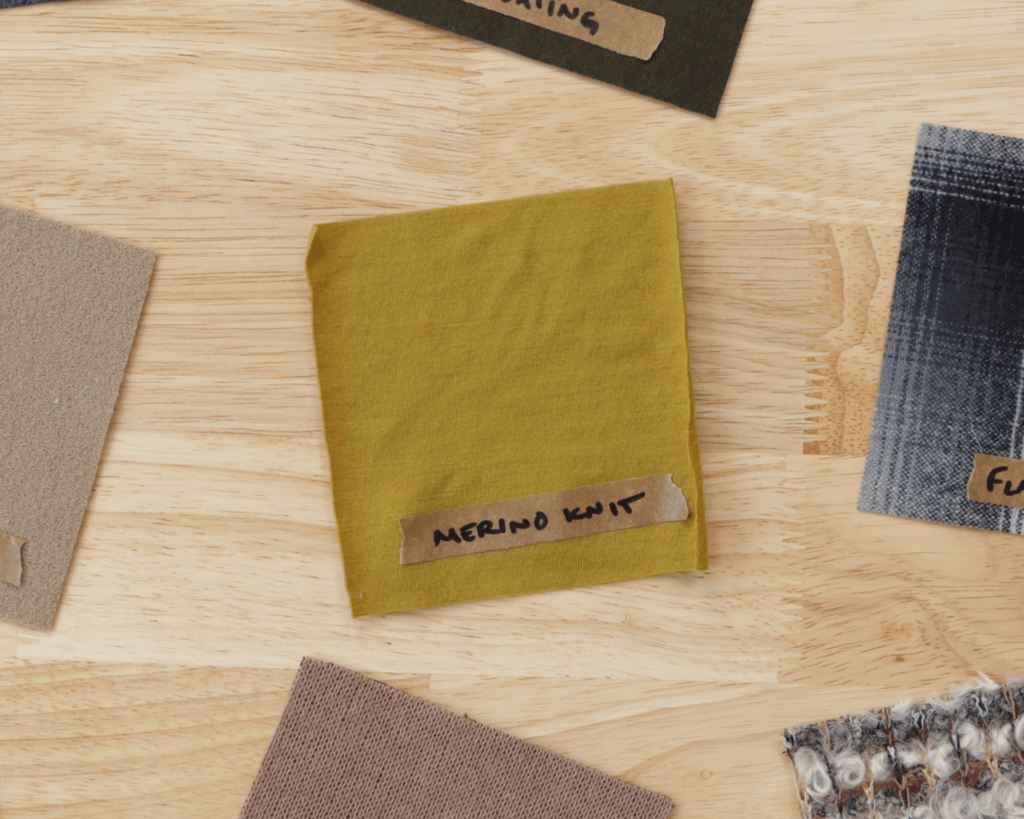
Merino wool knit is a knit fabric made from fine Merino sheep fibers. Prized for softness, this fabric is smooth, breathable, and comfortable even against bare skin.
These properties make merino knit an excellent choice for layering pieces like base tops, dresses, or even activewear. For heavy-use garments, shoulder seams should be stabilized to prevent stretching.
Recommended Patterns:
Jenny top: This fitted mock-neck top makes an excellent layering piece in merino knit. Be sure to choose merino knit with at least 50% stretch to make sure your head fits through the collar opening.
Flor cardigan: This sleek wrap cardigan adds polish and comfort to any outfit, especially when sewn in merino.
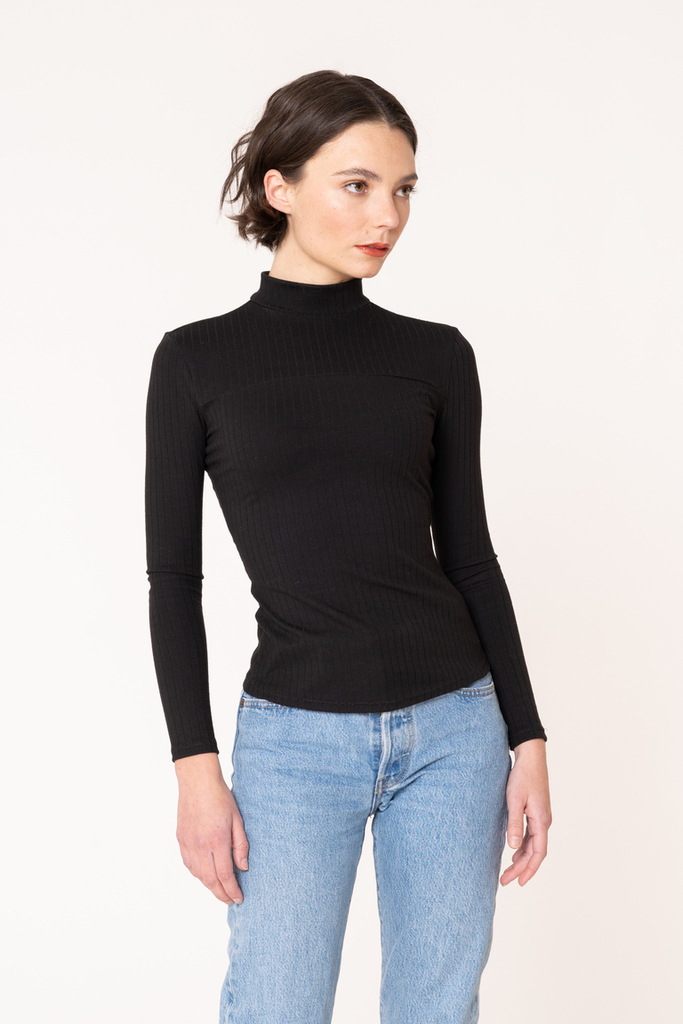
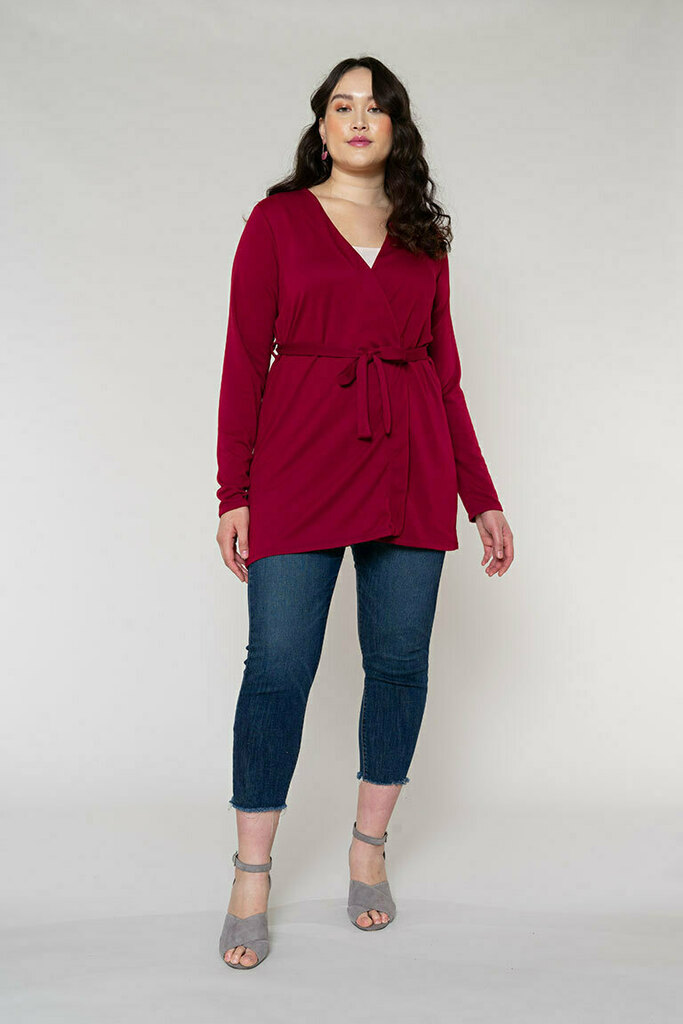
10. Wool Bouclé
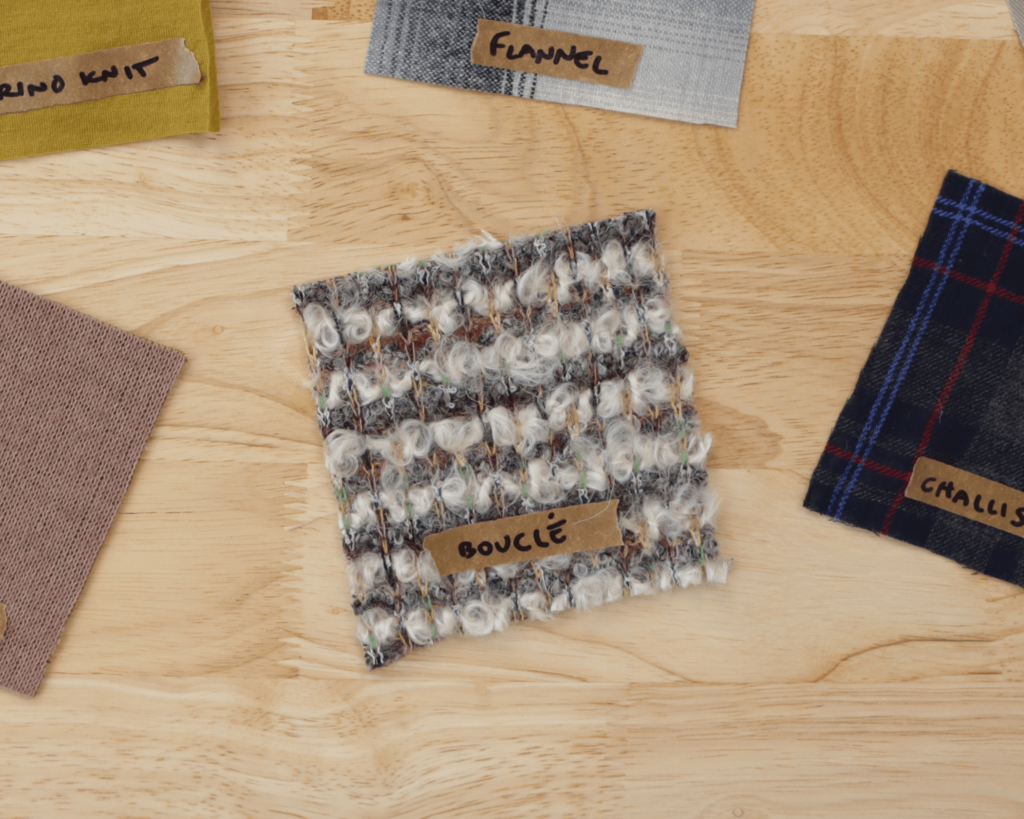
Wool boucle is a wool fabric with looped or curled yarns that create a bumpy, textured surface. Lofty, spongy, and visually striking, this fabric can be made from a knit or woven construction.
Boucle is perfect for garments where texture shines, think statement coats and designer suit sets. Because of the loose weave/knit structure, the loops can catch in your machine. Use a walking foot and test stitches first.
Recommended Patterns:
Jill coatigan: The simple construction of this oversized piece lets bouclé’s texture take the spotlight.
Lilliana jacket: Boucle would be a striking option for this jacket to create a couture-inspired look.
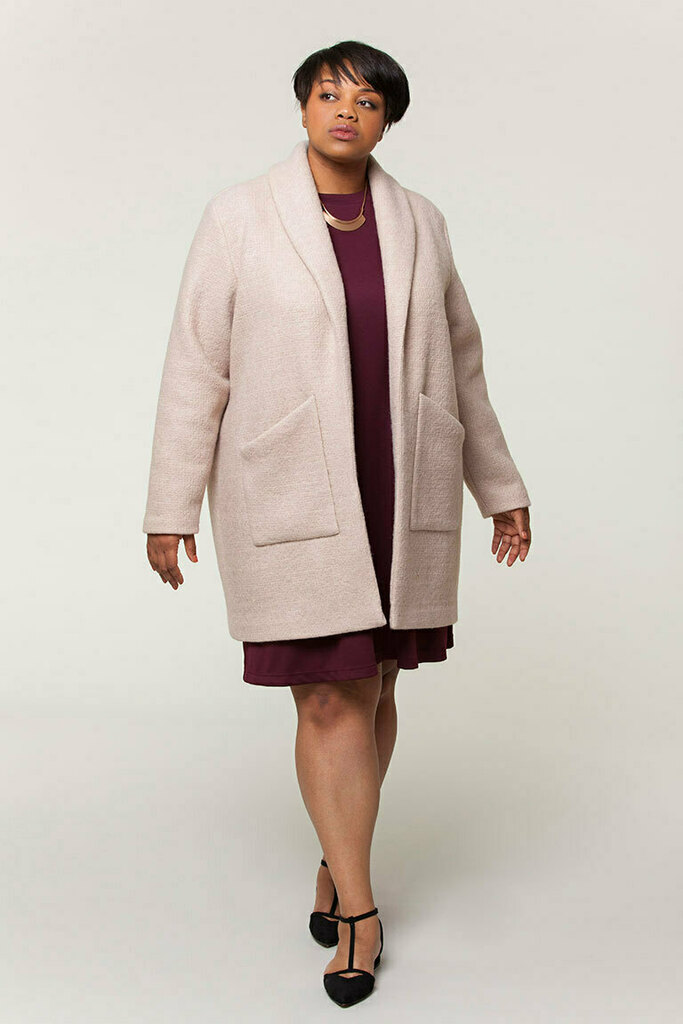
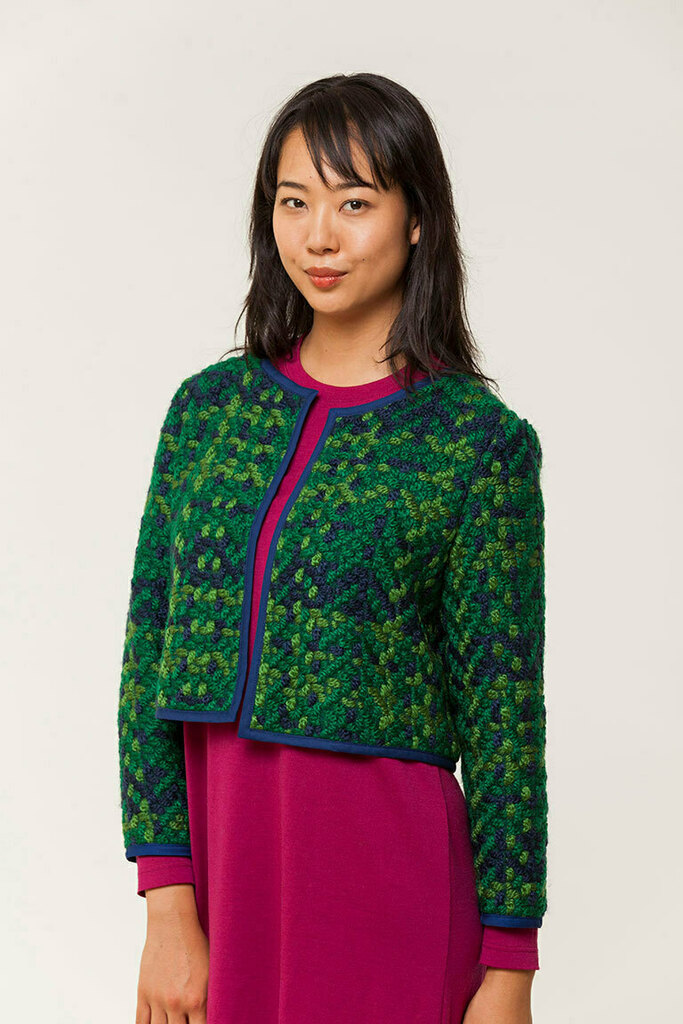
11. Wool Double Knit
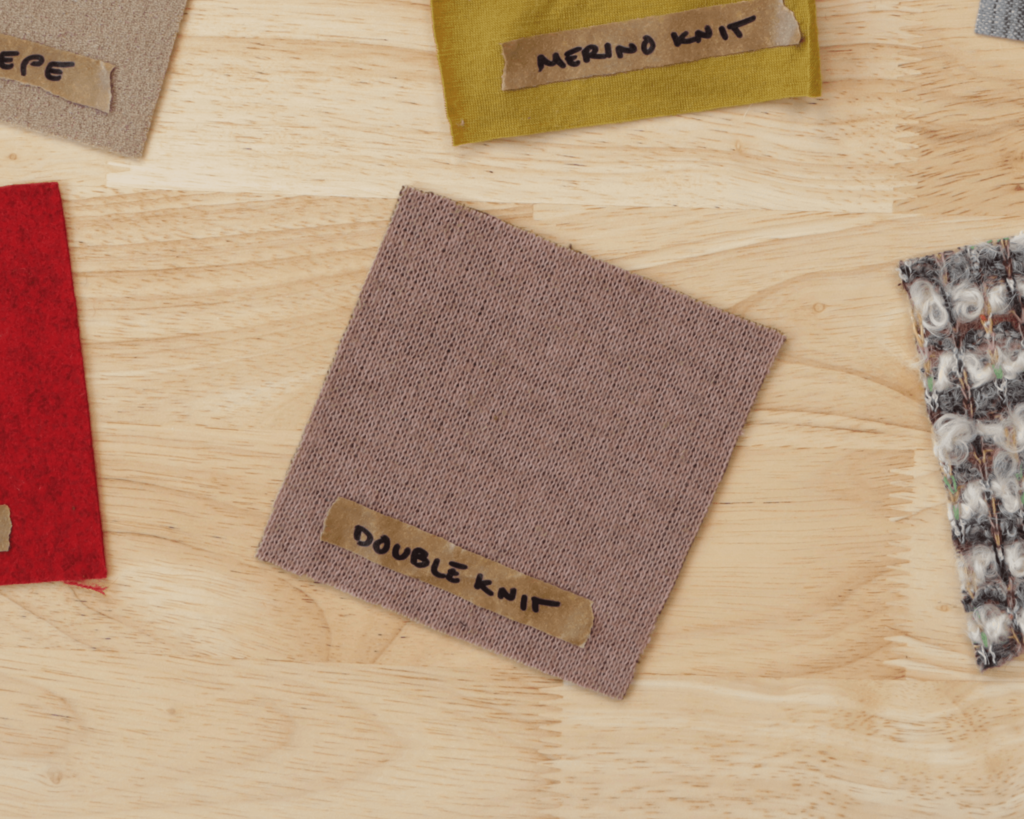
Wool double knit is a stable knit with two layers of interlocked stitches. Thicker than jersey, this fabric is dense, smooth, and structured with just enough stretch.
Double knit is great for dresses, skirts, and pants where you want stretch but also structure. Easy to sew compared to other knits, the edges won’t curl and it presses beautifully.
Recommended Patterns:
Milo cardigan: This relaxed layering piece is polished but cozy in double knit.
Palmer pants: Thanks to the structure of double knit wool, these wide-leg pants feel like loungewear but look sharp—the ultimate secret pajamas.
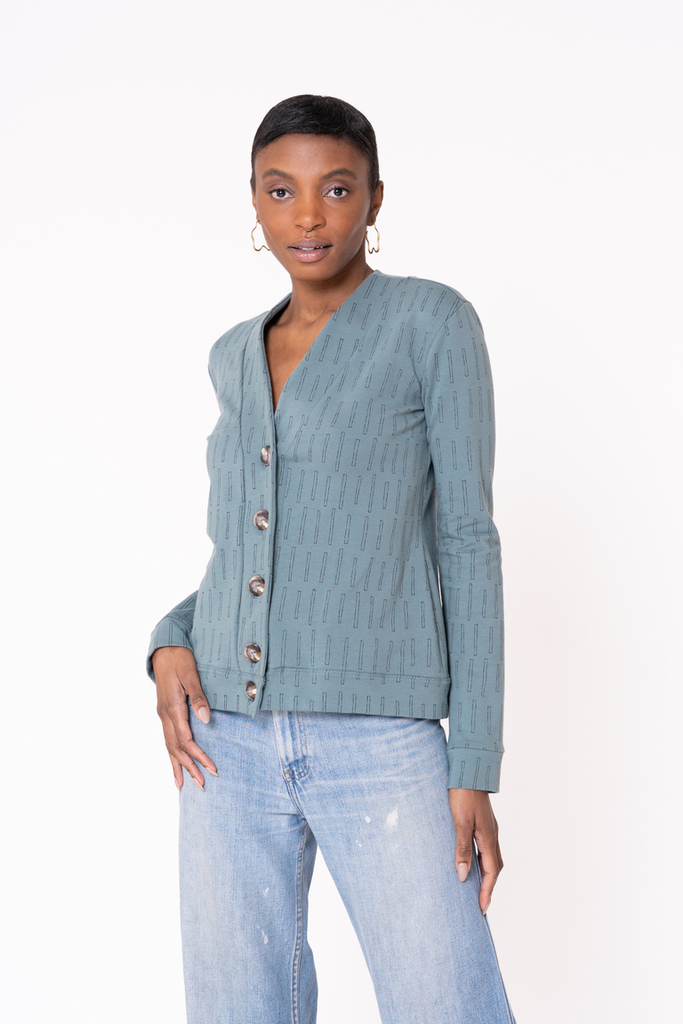
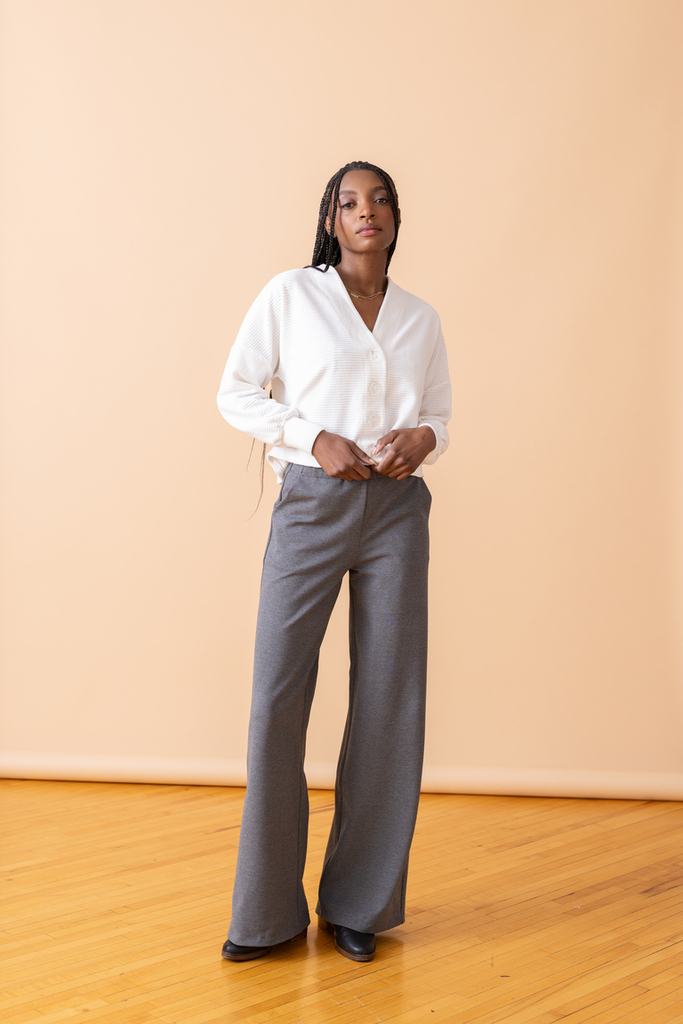
12. Wool Melton
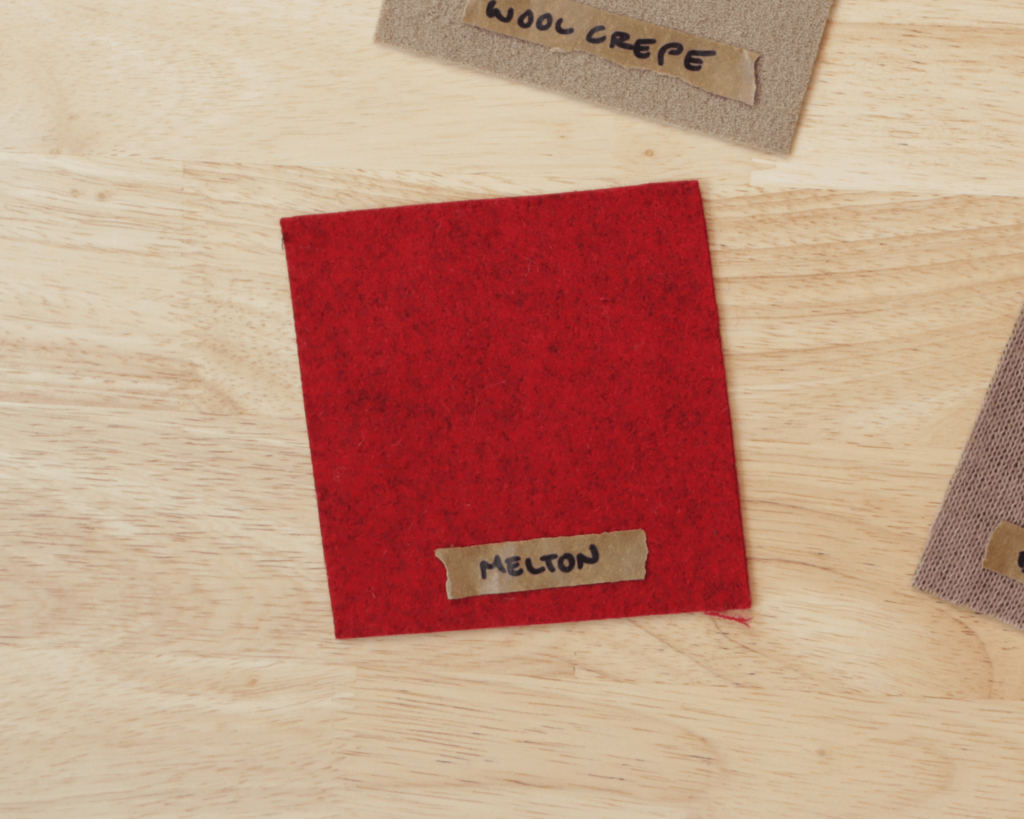
Wool melton is a dense, felted wool fabric. Thick, heavy, and very warm, it’s a go-to for peacoats, duffle coats, and outerwear that’s both practical and elegant.
Melton doesn’t fray much thanks to its felted finish, so seam finishing is optional. For best results use sharp shears and a heavy needle.
Recommended Patterns:
Baz coat: This unlined, wrap-style coat makes the most of melton’s felted texture and doesn’t require seam finishing.
Camden cape: This fully lined cape gains extra drama and warmth from melton’s weight and body.
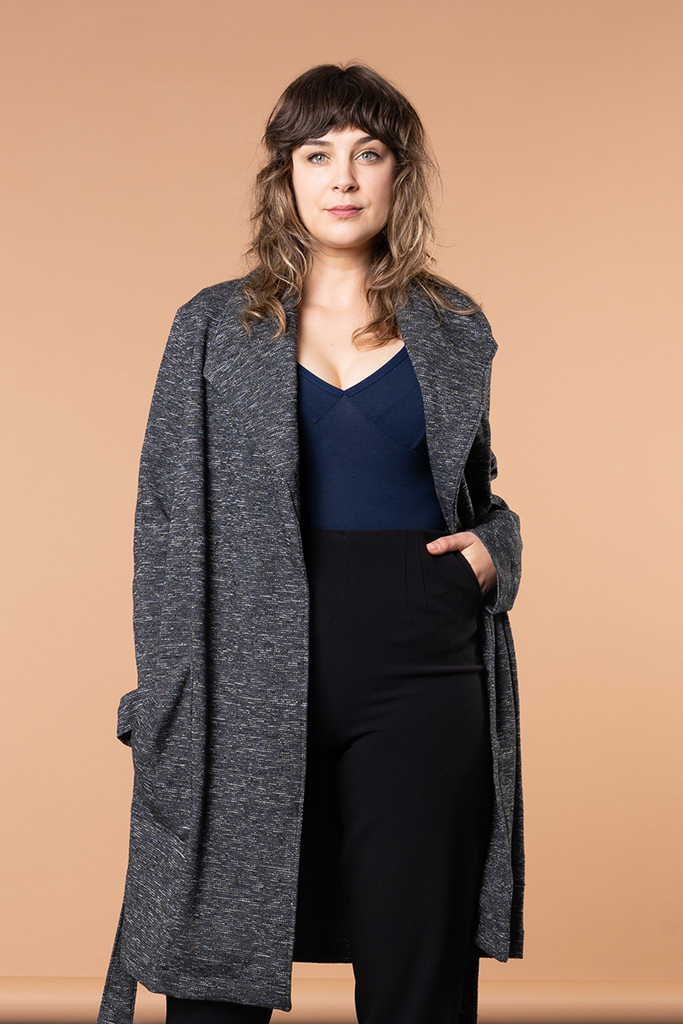
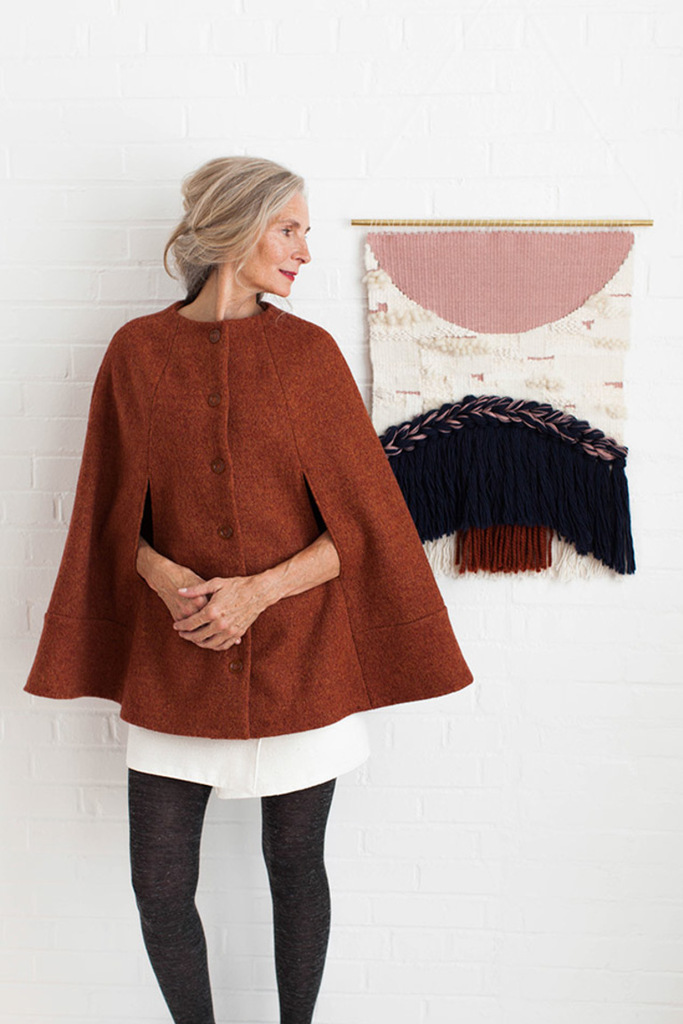
Bonus: A Checklist for Caring for Wool Garments
Wool is naturally resilient and long-lasting, but it does need a little extra attention compared to cotton or synthetics. With the right prep and care, your wool garments can last for decades.
Preparing Wool Before You Sew
Wool can shrink with heat and moisture, consider a pre-treatment method before cutting:
- Steam-shrink with an iron: Hover a steam iron above the fabric (don’t press down) and let steam relax the fibers.
- Damp towel method: Lay fabric flat, cover with a damp towel, and press lightly with an iron.
- Professional treatment: Ask a dry cleaner about pre-shrinking (often called sponging).
Washing and Cleaning Wool
Dry cleaning is safest for structured or lined garments, but at-home care is possible:
- Hand wash: Use cool water and wool-safe detergent. Gently squeeze, then lay flat to dry.
- Machine wash: Use the wool/delicate cycle with cold water and a mesh bag.
- Skip the dryer: Reshape and air dry flat on a towel.
Everyday Care
Wool doesn’t need as frequent washing as plant-based or synthetic fibers. Keep garments fresh with light maintenance:
- Steam refresh: Use a steamer or hang in a steamy bathroom between wears.
- Brush and air out: For coats and heavier wools, brush off dust and hang to air out.
- Store smart: Keep wool in a cool, dry space. Use cedar or lavender to deter moths, and fold heavy knits instead of hanging.
Final Thoughts
Wool isn’t just for coats—it’s one of the most versatile fibers you can sew with. From airy challis to sturdy tweed, there’s a wool for every style and season. With the right techniques and a little care, you’ll create timeless garments you’ll reach for again and again.
